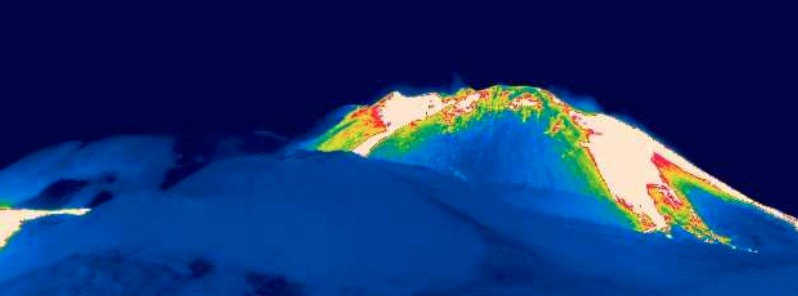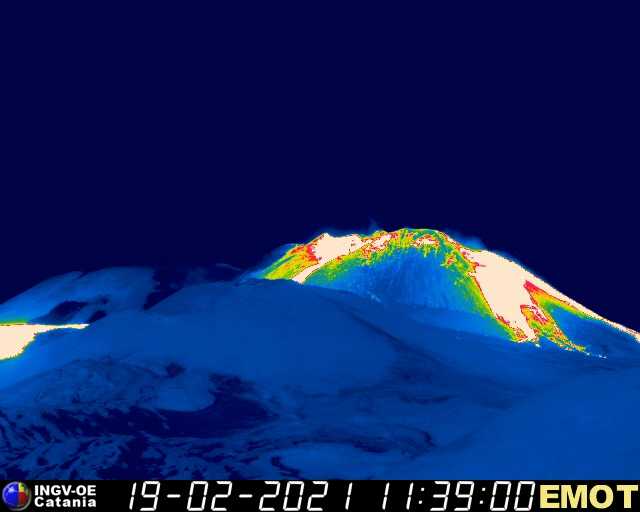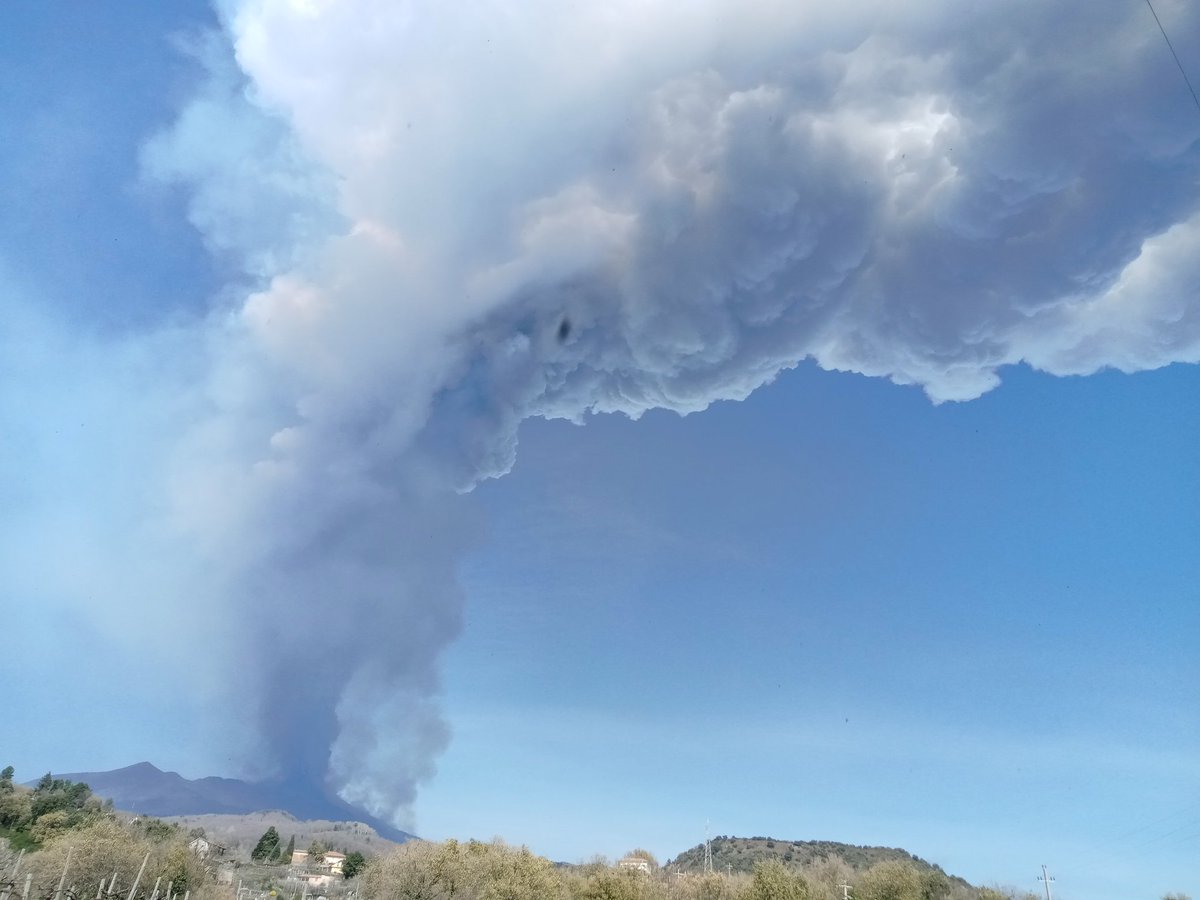Third paroxysm with very strong ash emission to 10 km (33 000 feet) a.s.l. at Etna volcano, Italy

The third paroxysm in just several days started at Etna volcano early Friday morning (UTC), February 19, 2021. The Aviation Color Code was raised to Red at 08:53 UTC.
Lava fountaining was observed at summit craters with very strong ash emission and ashfall in villages on the ESE flank of the volcano.
The estimated volcanic cloud height was 10 km (33 000 feet) above sea level at 10:00 UTC today.
A new lava overflow of the Southeast Crater started shortly before 07:55 UTC. The lava flow is descending the eastern side of the cone, heading towards the Valle del Bove.





Etna on February 19, 2021. Credit: Boris Behncke
The following videos were captured on February 18:


Video courtesy Turi Caggegi


Video courtesy INGV
Read more:
- Spectacular eruption at Etna volcano, Italy (February 18, 2021)
- Intense explosive activity at Etna volcano, Aviation Color Code raised to Red, Italy (February 16, 2021)
Geological summary
Mount Etna, towering above Catania, Sicily's second-largest city, has one of the world's longest documented records of historical volcanism, dating back to 1500 BCE.
Historical lava flows of basaltic composition cover much of the surface of this massive volcano, whose edifice is the highest and most voluminous in Italy.
The Mongibello stratovolcano, truncated by several small calderas, was constructed during the late Pleistocene and Holocene over an older shield volcano. The most prominent morphological feature of Etna is the Valle del Bove, a 5 x 10 km (5.1 x 6.2 miles) horseshoe-shaped caldera open to the east.
Two styles of eruptive activity typically occur at Etna. Persistent explosive eruptions, sometimes with minor lava emissions, take place from one or more of the three prominent summit craters, the Central Crater, NE Crater, and SE Crater (the latter formed in 1978).
Flank vents, typically with higher effusion rates, are less frequently active and originate from fissures that open progressively downward from near the summit (usually accompanied by strombolian eruptions at the upper end).
Cinder cones are commonly constructed over the vents of lower-flank lava flows. Lava flows extend to the foot of the volcano on all sides and have reached the sea over a broad area on the SE flank. (GVP)
Featured image credit: Boris Behncke/INGV

Commenting rules and guidelines
We value the thoughts and opinions of our readers and welcome healthy discussions on our website. In order to maintain a respectful and positive community, we ask that all commenters follow these rules.